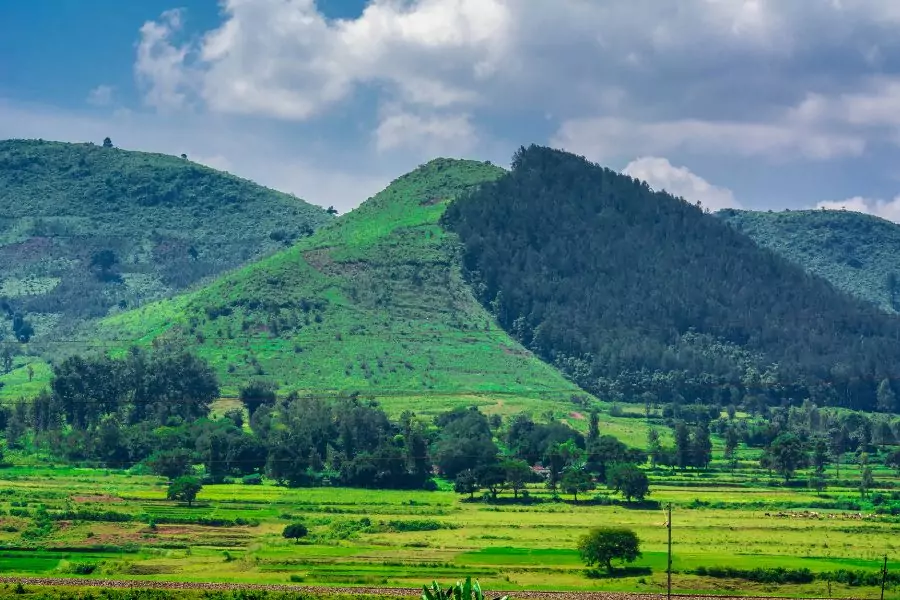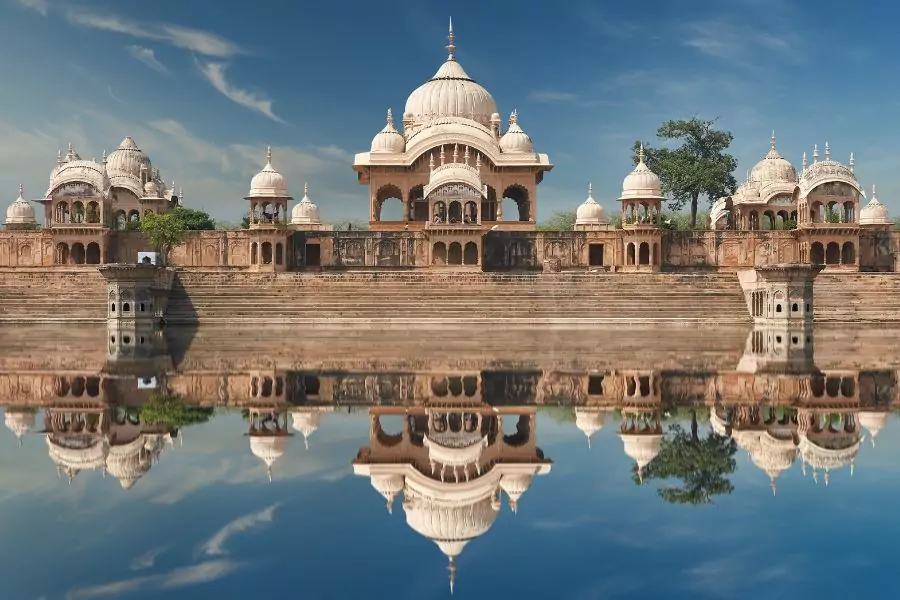Mahabalipuram – Natural Beauty and Scenic Landscapes,

Mahabalipuram, also known as Mamallapuram, lies along the southeastern coast of India in Tamil Nadu. This UNESCO World Heritage site is famous for its ancient rock-cut temples, intricate carvings, and beautiful coastal landscapes. Steeped in history and mythology, Mahabalipuram offers a fascinating glimpse into the architectural brilliance of the Pallava dynasty and remains a popular destination for travelers and history enthusiasts alike.
A Glimpse into the History of Mahabalipuram
Mahabalipuram traces its origins back to the 7th and 8th centuries during the reign of the Pallava kings. King Narasimhavarman I, also known as Mamalla, played a significant role in the town’s development, earning the town its alternative name, Mamallapuram. The Pallavas, known for their patronage of the arts, commissioned several rock-cut temples and monuments that still stand as testament to their architectural prowess.
Over centuries, Mahabalipuram evolved into an important port city, facilitating trade between India and Southeast Asia. Its strategic location along the Bay of Bengal made it a bustling center of commerce, culture, and religion.
Architectural Marvels of Mahabalipuram
Mahabalipuram’s architectural wonders, characterized by their unique rock-cut style, continue to amaze visitors. Here’s a look at some of the most iconic monuments in the town:
1. Shore Temple

The Shore Temple, standing majestically on the shores of the Bay of Bengal, is perhaps Mahabalipuram’s most iconic structure. Built around 700 AD, this temple complex comprises three shrines dedicated to Lord Shiva and Lord Vishnu. The temple’s unique location by the sea makes it a popular spot for sunrise and sunset views, with the sun casting a golden hue over the ancient stone.
2. Pancha Rathas

The Pancha Rathas, or Five Rathas, are monolithic rock-cut temples, each carved from a single stone. These rathas, named after the Pandavas from the Mahabharata, display different architectural styles, showcasing the Pallavas’ creativity and skill. The Draupadi Ratha, Nakula Sahadeva Ratha, and Arjuna Ratha are among the most notable, with intricate carvings that narrate stories from Hindu mythology.
3. Arjuna’s Penance

Arjuna’s Penance, also known as Descent of the Ganges, is one of the largest and most intricate bas-reliefs in the world. This massive rock carving, spanning 100 feet in length and 45 feet in height, depicts various scenes from Hindu mythology, including the descent of the River Ganges from the heavens. The level of detail in the carvings, including figures of gods, animals, and celestial beings, highlights the exceptional craftsmanship of the Pallava artisans.
4. Krishna’s Butter Ball

Krishna’s Butter Ball, a giant granite boulder perched precariously on a slope, remains one of Mahabalipuram’s most intriguing attractions. Weighing around 250 tons, this natural wonder seems to defy gravity, as it has remained in the same position for centuries without rolling down. According to local legend, Lord Krishna, known for his love of butter, placed the boulder in its current spot, giving it its playful name.
5. Mahishasuramardini Cave

The Mahishasuramardini Cave, another masterpiece of rock-cut architecture, contains intricate carvings that depict the goddess Durga slaying the demon Mahishasura. This cave, located on a hill, offers stunning views of the surrounding landscape and the nearby Shore Temple.
6. Varaha Cave Temple

The Varaha Cave Temple, dedicated to Lord Vishnu, features beautiful carvings of the Varaha (boar) avatar of Vishnu. The temple’s pillars, adorned with intricate designs, showcase the artistic excellence of the Pallava period.
7. Tiger Cave

The Tiger Cave, located a few kilometers north of Mahabalipuram, serves as a lesser-known yet equally fascinating site. The cave gets its name from the series of tiger heads carved into the entrance. This rock-cut theater likely hosted various cultural and religious events during the Pallava period.
8. Thirukadalmallai Temple

Thirukadalmallai Temple, dedicated to Lord Vishnu, holds significant religious importance for Hindus. The temple, which dates back to the Pallava period, remains an active place of worship and draws devotees from across the region.
The Rich Cultural Heritage of Mahabalipuram
Mahabalipuram’s cultural heritage extends beyond its architectural wonders. The town plays host to various festivals, cultural events, and traditional crafts that keep its rich history alive.
1. Mahabalipuram Dance Festival

The Mahabalipuram Dance Festival, held annually during December and January, is a grand celebration of Indian classical dance forms. Dancers from across India perform against the backdrop of the Shore Temple, creating a mesmerizing blend of art, culture, and history. The festival attracts visitors from all over the world, offering a unique opportunity to witness traditional dance in a historic setting.
2. Stone Carving Tradition
Mahabalipuram continues to be a hub for stone carving, a craft that has been passed down through generations. Local artisans create exquisite sculptures, often inspired by the town’s ancient monuments. Visitors can watch these skilled craftsmen at work and purchase intricately carved souvenirs as a memento of their visit.
3. Local Cuisine
The coastal location of Mahabalipuram has influenced its cuisine, with seafood playing a prominent role. Visitors can savor fresh fish, prawns, and crabs, cooked with local spices, at the many restaurants and eateries around town. Traditional South Indian dishes like dosas, idlis, and coconut-based curries are also popular among visitors.
Natural Beauty and Scenic Landscapes
Beyond its historical and cultural significance, Mahabalipuram offers stunning natural beauty. The town’s location along the Bay of Bengal provides picturesque beaches, serene landscapes, and opportunities for outdoor activities.
1. Mahabalipuram Beach

Mahabalipuram Beach, with its golden sands and gentle waves, is a perfect spot to unwind and enjoy the natural beauty of the coastline. Visitors can take leisurely strolls along the beach, watch fishermen at work, or simply relax under the shade of palm trees. The beach also serves as a popular spot for photography, with the Shore Temple providing a stunning backdrop.
2. Covelong Beach

Located a short drive from Mahabalipuram, Covelong Beach offers a more tranquil alternative. The beach, known for its clean sands and clear waters, provides opportunities for swimming, sunbathing, and water sports. Covelong’s serene ambiance makes it a favorite among those seeking a peaceful escape from the hustle and bustle of city life.
3. Crocodile Bank

The Madras Crocodile Bank, located near Mahabalipuram, is a conservation center for reptiles, including crocodiles, alligators, and turtles. The center, which is home to over 2,000 reptiles, offers educational tours and close-up views of these fascinating creatures in a safe and natural environment. It’s a great place for families and wildlife enthusiasts to learn about the importance of reptile conservation.
4. Backwater Cruises
Mahabalipuram offers backwater cruises along the scenic Buckingham Canal, allowing visitors to explore the region’s lush landscapes and rich birdlife. These cruises provide a peaceful and immersive experience, offering a different perspective of the town’s natural beauty.
Best Time to Visit Mahabalipuram
The best time to visit Mahabalipuram is between November and February when the weather remains pleasant and cool. During these months, the temperatures range between 20°C and 25°C, making it ideal for exploring the town’s outdoor attractions and monuments. The monsoon season (June to September) brings heavy rainfall, which can make outdoor activities challenging, while the summer months (March to May) can be hot and humid.
How to Reach Mahabalipuram
1. By Air
The nearest airport to Mahabalipuram is Chennai International Airport, located about 60 kilometers away. The airport connects to major cities across India and internationally. From Chennai, you can hire a taxi or take a bus to reach Mahabalipuram.
2. By Train
The nearest railway station to Mahabalipuram is Chengalpattu, located about 30 kilometers away. Chengalpattu connects to Chennai and other major cities in Tamil Nadu. From the station, you can take a taxi or bus to reach Mahabalipuram.
3. By Road
Mahabalipuram connects well by road, with regular bus services from Chennai, Pondicherry, and other nearby cities. You can also drive to Mahabalipuram, as the East Coast Road (ECR) provides a scenic and well-maintained route along the coastline.
Accommodation in Mahabalipuram
Mahabalipuram offers a range of accommodation options, from luxury resorts to budget hotels. Visitors can choose from beachside resorts, heritage hotels, or guesthouses, depending on their preferences and budget.
1. Luxury Resorts
For those seeking a luxurious stay, Mahabalipuram offers several high-end resorts that provide stunning views, top-notch amenities, and proximity to the beach. These resorts often feature private beach access, spa facilities, and fine dining options, making them ideal for a relaxing and indulgent getaway.
2. Heritage Hotels
Mahabalipuram’s heritage hotels offer a unique experience, allowing visitors to stay in beautifully restored buildings that reflect the town’s rich history. These hotels combine modern comforts with traditional architecture, providing a charming and authentic stay.
3. Budget Hotels and Guesthouses
For budget-conscious travelers, Mahabalipuram has several budget hotels and guesthouses that offer comfortable and affordable accommodations. These options provide basic amenities and are often located close to the town’s main attractions.
Conclusion
Mahabalipuram is a destination that beautifully blends history, culture, and natural beauty. Whether you’re an architecture enthusiast, a history buff, or simply looking to relax by the beach, Mahabalipuram offers something for everyone. The town’s ancient temples, intricate carvings, and scenic landscapes create a mesmerizing experience that leaves a lasting impression on all who visit.


